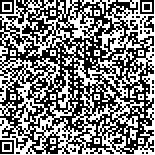下载中心
优秀审稿专家
优秀论文
相关链接
摘要

由美国宇航局(NASA)研制的新一代冰、云和陆地高程卫星(ICESat-2)于2018-09-15发射成功,其搭载的先进地形激光测高系统(ATLAS)采用微脉冲多波束光子计数激光雷达技术,可用于全球高程线采样数据的获取。目前公开发布了9种数据产品,其中包括植被冠层高度和地表高程数据产品(ATL08),为全球森林结构参数的估算提供了新的契机。本文以美国宾夕法尼亚州斯奈德县和印度尼西亚西加里曼丹吉打邦为研究区,在温带森林和热带雨林两种不同的生态系统立地条件下,对 ICESat-2的ATL08数据产品用于森林高度估算的效果进行评价。首先建立了地形高程数据产品(ATL03)与ATL08数据产品的关联规则,以获取分别记录在这两种产品中的光子空间分布信息和分类信息;进而以机载小光斑激光雷达数据为参考,对ATL08数据产品的光子分类可靠性及其用于森林高度估算的准确性进行了分析评价。结果表明:(1)在温带森林情况下,ATL08数据产品提供的平均冠层高度和最大冠层高度与参考数据的相关系数(R2)分别为0.54和0.61,相对误差分别为16.78%和10.71%,表明ATL08数据产品的光子分类结果能够用于刻画森林冠层结构和林下地形;(2)在热带雨林情况下,到达地面的光子数量相较于温带森林明显减少,地面光子类型识别的可靠性低,ATL08数据产品提供的平均冠层高度和最大冠层高度与参考数据的相关系数(R2)分别为0.21和0.19;(3)森林覆盖度的增大会导致ATL08计算的冠层高度误差增大,热带雨林平均冠层高度的误差随着坡度增大有增大趋势,在坡度为0°—10°、10°—20°和20°—30°共3组情况下,误差分别为5.7 m、6.6 m和9.3 m。因此,在高森林覆盖度情况下,现有的ATL08数据产品难以直接用于森林高度的提取。
The ICESat-2 satellite, which operates through the technology of multi-beam single-photon-counting, provides a new opportunity for the mapping of global forest structures. Although previous studies based on the airborne simulator of ICESat-2 have shown that it has great potential to estimate forest structure parameters using single-photon-counting data, the performance of ICESat-2 needs to be examined due to the major differences between airborne system and ICESat-2. The National Aeronautics and Space Administration has released nine types of ICESat-2 data products, one of which is the vegetation canopy height and surface elevation data (ATL08). Therefore, the purpose of this paper is to evaluate the performance of ATL08 on the estimation of forest height by referencing to small-footprint LiDAR data.The basis for the accurate estimation of forest height using photon-counting LiDAR data is the correct classification of photons, that is, identification of noise photons, ground photons, and vegetation photons. The ATL08 only records photon classification and forest structure parameters, and the geographical coordinates of each photon are recorded in the Terrain Elevation (ATL03) product. Therefore, ATL03 and ATL08 need to be connected first according to the organization of two products. Taking the data of small-footprint LiDAR as reference, the ATL08 products were evaluated from two aspects. First, the classification results of photons are evaluated by referencing to the profiles from the Digital Terrain Model (DTM) and the Digital Surface Model (DSM) derived using the small-footprint LiDAR data. Then, percentile height metrics of each 100-m-long segment in ATL08 product were evaluated by referencing to corresponding metrics calculated using the point cloud data of small-footprint LiDAR.This study was carried out in two test sites: Snyder County in Pennsylvania, United States and Ketapang in West Kalimandin, Indonesia. These sites represented temperate forest and tropical rainforest, respectively. In the temperate forest, the classification accuracy of noise photons, ground photons, and canopy photons in ATL08 products were acceptable. The estimation accuracy of maximum canopy height was slightly better than that of mean canopy height with R2=0.61 against 0.54 and RMSE=10.71% against 16.78%. In the tropical rainforest with relatively low canopy cover, the ground photons in ATL08 could be correctly identified. However, in the forest with high canopy cover, the number of photons near the ground is inadequate. In addition, the identified ground photons in ATL08 were not enough to fit the terrain under the forest, which caused obvious errors in the estimation of forest height. The results of the quantitative analysis of the error of mean canopy height between canopy cover and terrain show that with the increase of canopy cover, the error of canopy height calculated by ATL08 will increase. In the tropical rainforest, the error of the mean canopy height will increase as the slope increases. When the slope is 0°—10°, 10°—20°, and 20°—30°, the error is 5.7 m, 6.6 m, and 9.3 m, respectively.Ie can be concluded based on the results of this study that ATL08 product could be used to estimate the height of temperate forests. However, in dense tropical rainforests, due to the limited penetration capabilities of LiDAR and difficulties in the correct identification of ground photons, the existing ATL08 data will be difficult to use for forest height estimation.

